Carnival of Los Llanos de Aridane

In the Los Llanos main Plaza, when we first arrived, I noticed the Japanese symbols and Chinese lanterns hanging from the street lamp posts.
Before the final parade they had a stage concert with local singers singing traditional songs. The local people dressed up for the occasion in various costumes mainly with an Japanese Chinese dress theme. Coloured talcum powder was been thrown over each young participant with abandon everywhere we walked in the city centre.
The carnival culminates with a parade of bands and themed costume dancers up the Avenida Enrique Mederos.
The theme of the Carnival of Aridane is chosen by the community with the votes cast through the municipal website and social networks. They can also vote in person at the Department of Fiestas, located on the first floor of the City Council of Los Llanos.
The Carnival of the Plains of Aridane officially starts with the ceremony of “Official presentation of the Candidates for Queen”. A total of 17 candidates aspire to become Queens of the Carnival of Los Llanos de Aridane.
Among his most outstanding acts are:
- Gala of choice of the adult Queen.
- Gala of election of the Infantile queen.
- the “Great Polvacera”.
- The “traditional thing”: In which all the carnival groups participate. Some of the most representative characters of these parties also participate, as well as adults and children dressed in their costumes take to the streets to enjoy this colorful day.
- The outdoor exhibition of the costumes that the candidates have worn.
- “Carnavalero parade”.
- Comparsas Festival and the funeral of La Sardina.
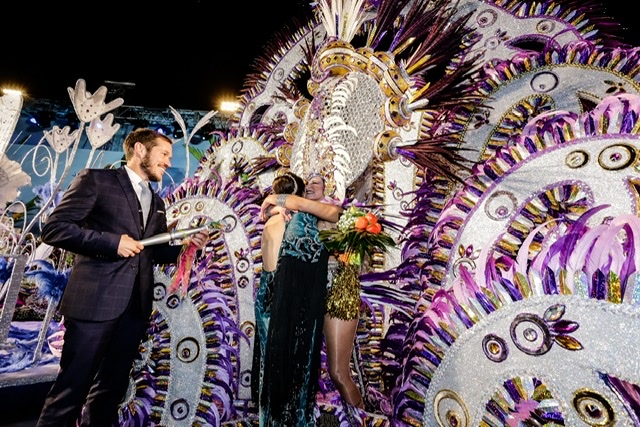
Lizard Park
Near the edge of Los Llanos is lovely ornate park with lizard sculpture entrance and ornate metal gates and railings.
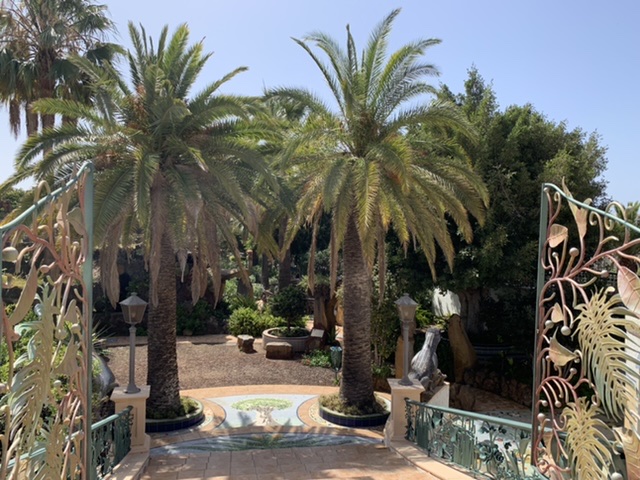

The central area has an impressive water feature and the local volcanic rock and detailed mosaics path ways. It’s such a wild life sanctuary as well lovely to sit on one of the benches basking in the sun watching the beautiful butterflies farting around and sound of birds singing to each other.
If you sneak up on the small abundant lizards they lay still love to bask on the warm volcanic rock completely motionless.


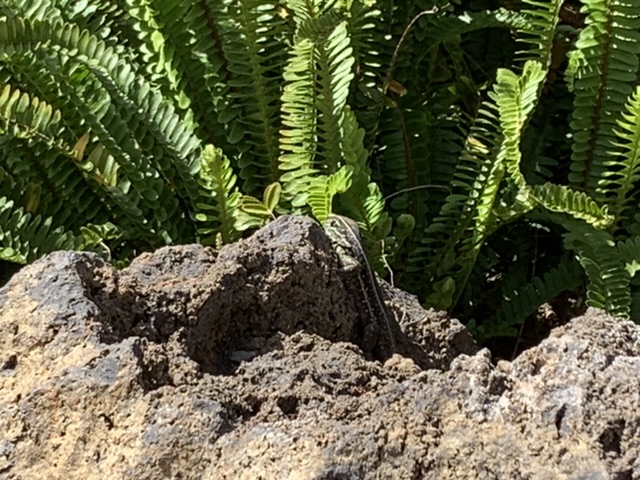
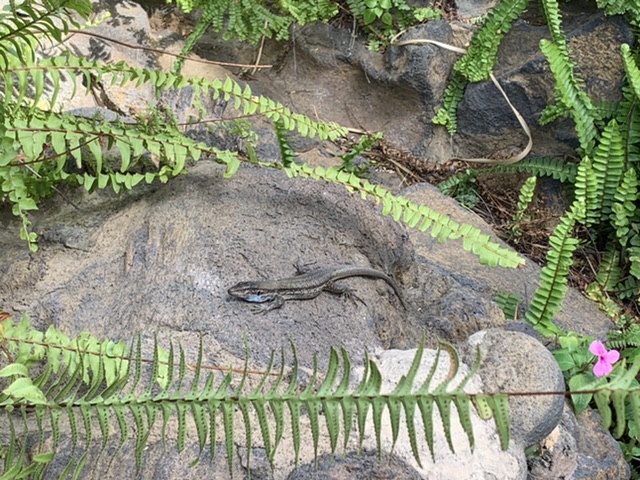
Beaches of Western La Palma
We visited three main beaches during month long stay in La Palma,
Puerta Tazacorte which is a 5 kilometre downhill walk through the banana plantations via Tazacorte town. The beach sit at the base or at the end of the Barranco de Las Angustias.
the Barranco de Las Angustias covers four municipalities on La Palma: El Paso, Tijarafe, Los Llanos de Aridane and Tazacorte.
This incredible natural space with enormous scenic value borders the Caldera de Taburiente National Park.
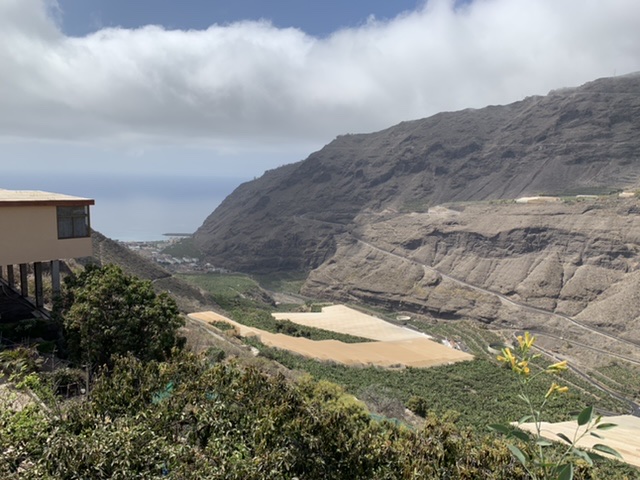
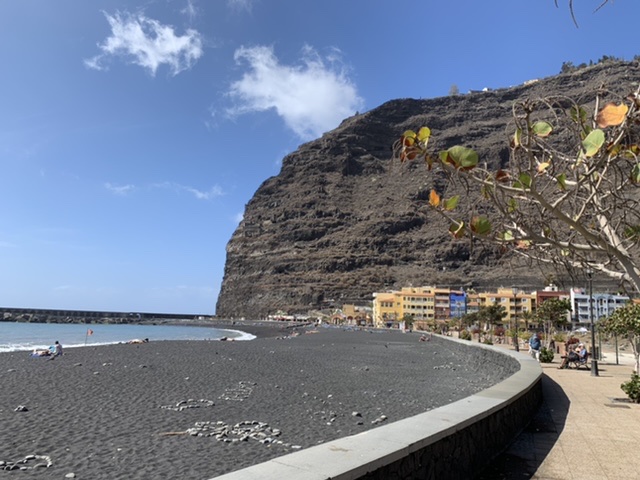

The beach is fairly well protected from the surge of the Atlantic Ocean with life guards on constant standby. Lots small restaurants surround the beach front. My first beach of choice!
Puerto Naos is a purpose built seaside resort with hotels and cafes surrounding the beach with a large hotel complex at the southern end.
It’s popular with the German tourists and again its a dark volcanic sandy beach. Nice but rather artificial as compared to Puerto Tazacorte.
The final beach we visited is slightly further south of Puerto Naos called Charco Verde, which I suppose is good name with green banana plantations on cliff side and the charcoal coloured beach. This is a low key beach with one small cafe on the beach itself.
We watched in amusement at the lone small Curlew enjoying a feast in the rock pools. We also saw three turnstone wading birds.
Overall we’ve had wonderful sunny warm days great for walking and swimming not too hot either average temperatures in low 20c. Other than the few days of high winds and sandy conditions of a Sahara kalmia. Certainly a great place to escape from the cold and wet of the UK winter.
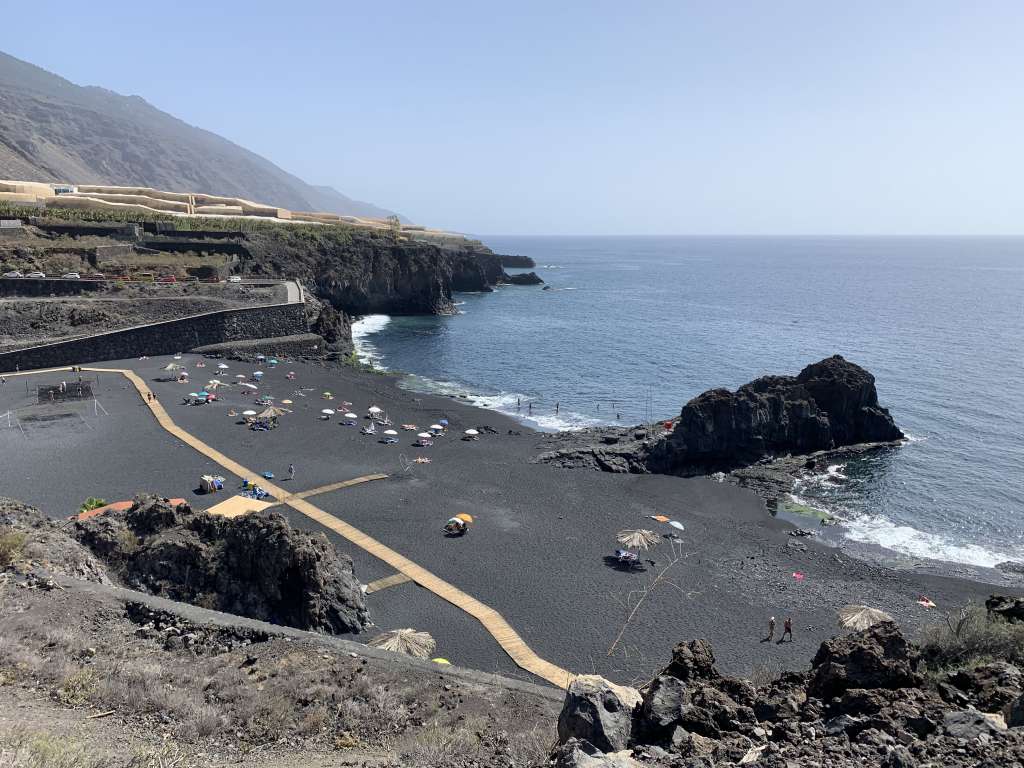
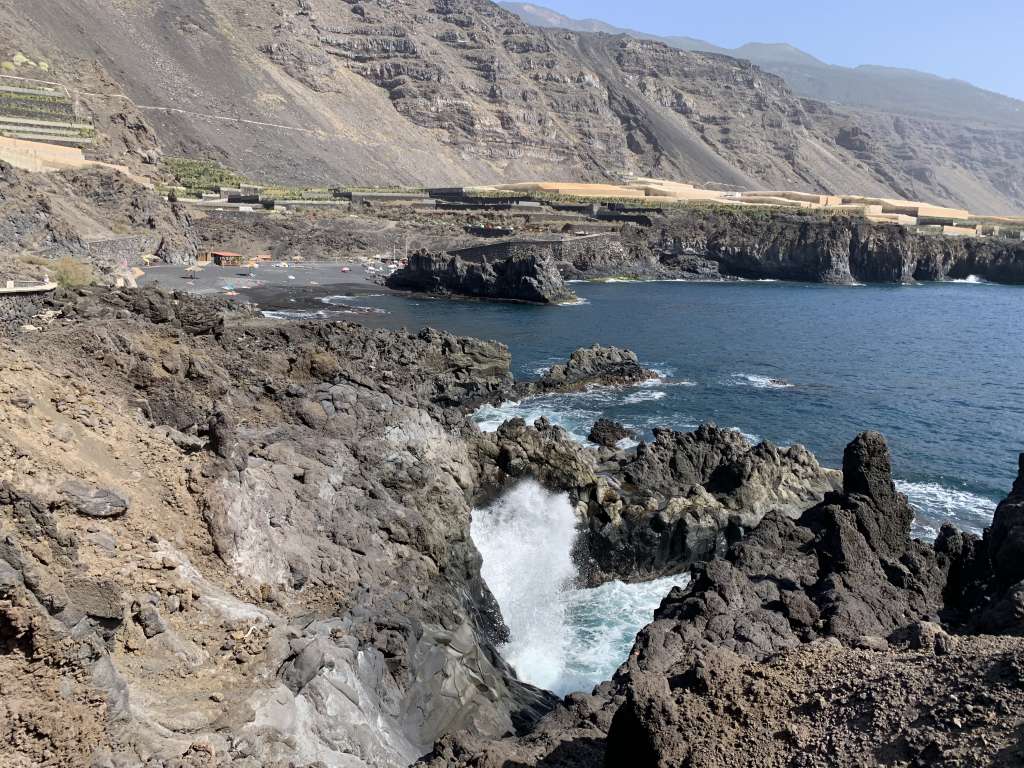
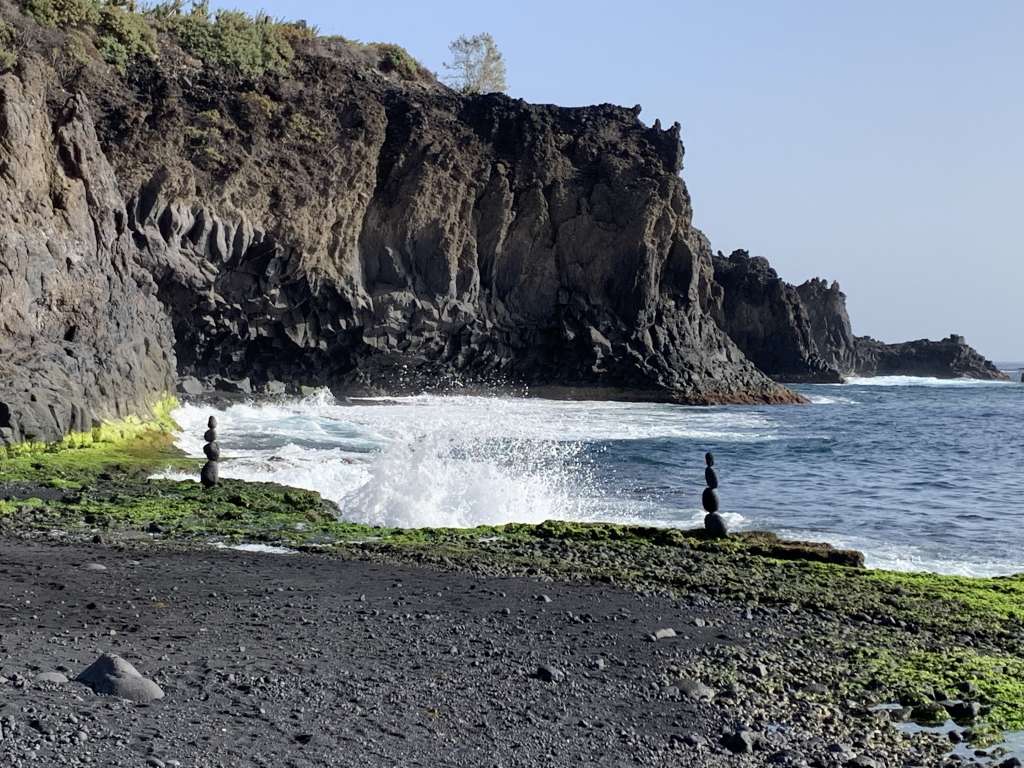




Today Monday 9 March we took a final walk down to Puerto Tazacorte for a final sun bathe and swim.
On arriving at back of the small breakwater wall we noticed a slight commotion. The life guard was assisting a lady swimmer who was in distress with her upper right arm.
We wondered what had caused this distress. I looked out across the water and saw the problem of floating “polythene sack like” creatures in the water.
Yes I knew right away it’s the Portuguese-man-of-war. They float and drift along the ocean currents and wind. They have long dangerous tentacles that are very poisonous even to humans.
There were lots floating adjacent to the beach and many Had washed up on the volcanic beach. Funny Rosie mentioned climate change and less predators around?
Portuguese-man-of- war aren’t jellyfish. Here’s a technical explanation; The Portuguese man o’ war (Physalia physalis), also known as the man-of-war,[6] is a marine hydrozoan found in the Atlantic, Indian and Pacific Oceans.
It is one of two species in the genus Physalia, along with the Pacific man o’ war (or Australian blue bottle), Physalia utriculus.[7] Physalia is the only genus in the family Physaliidae.
Its long tentacles deliver a painful sting, which is venomous and powerful enough to kill fish and even humans.[8]
Despite its appearance, the Portuguese man o’ war is not a true jellyfish but a siphonophore, which is not an individual multicellular organism
